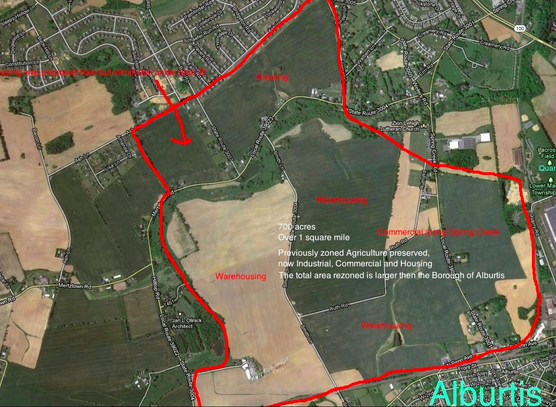The nomination of David Jaindl by the County administration for a seat on the Lehigh Valley Planning Commission is a bad idea. The benefits of developers serving on the LVPC make sense, but with all due respect to Mr Jaindl he is not the right choice. Lots of others would be better suited.
County Commissioner Percy Dougherty who represents Lower Macungie outlines some good arguments why the nomination isn’t a good idea. Some I agree with more than others but we come to the same conclusion.
For me the biggest problem with Mr. Jaindl is too often his projects directly and substantially conflict with the regional comprehensive plan. Here in Lower Mac we understand this better than most. Residents have and will continue to pay the price for maneuvers he made over the years that circumvented both the regional comprehensive plan and local comprehensive plans.
When appointing someone for the LVPC we have the opportunity to find a developer who consistently builds projects within the framework of the plan as opposed to someone who for years has quite literally run rough-shod over it.
Nominees should at minimum consistently demonstrate a belief in regional comprehensive planning. For developers that means their body of work should reflect key development concepts of the plan. Jaindl’s greenfield projects too often represent quintessential sprawl. Lots of responsible land developers out there. Once a year I get to spend time in DC with members of LOCUS. LOCUS is a smart growth oriented national coalition of conscientious land developers. Business people who recognize pent-up demand for a market shift toward high quality, sustainable, walkable smart growth oriented development.
Check out LOCUS here on twitter.
If Commissioners proceed with consideration of this nomination at minimum Mr. Jaindl should have to publicly defend why his projects so frequently clash with the comprehensive plan. Basically, Commissioners can and should request a public interview. I would have a number of questions I would ask.

David Jaindl’s 700 Spring Creek properties development directly conflicts with both the LVPC comprehensive plan, the southwest regional comprehensive plan (Alburtis, Macungie, Upper / Lower Milford and LMT) and also Lower Mac local plans. The project is the result of a 2010 rezoning of previously protected farmland. This project represents a blatant disregard for growth boundaries. Aside from the loss of farmland that was protected for 23 years, this will also negatively impact township residents both financially and in terms of quality of life.
Read Mr. Jaindl in 2010 got 700 acres of preserved farmland (over 1 square mile) rezoned.
Disclosure: In the past starting 3 years ago I expressed interest in the LVPC including a formal statement of interest most recently in February. I don’t see this as relating to critique of this nomination. Mainly because for this cycle I do agree seeking a developer and someone from Northwestern Lehigh makes sense for 2 open slots. I just don’t think we have the right developer. Personally, I’ve waited 3 years for consideration. I can wait another. Applying just made sense for me since regional planning issues are an interest of mine. I also think Lower Mac should have an elected official on the board since we are the 3rd largest municipality in the region and so many of our projects are of regional significance.
